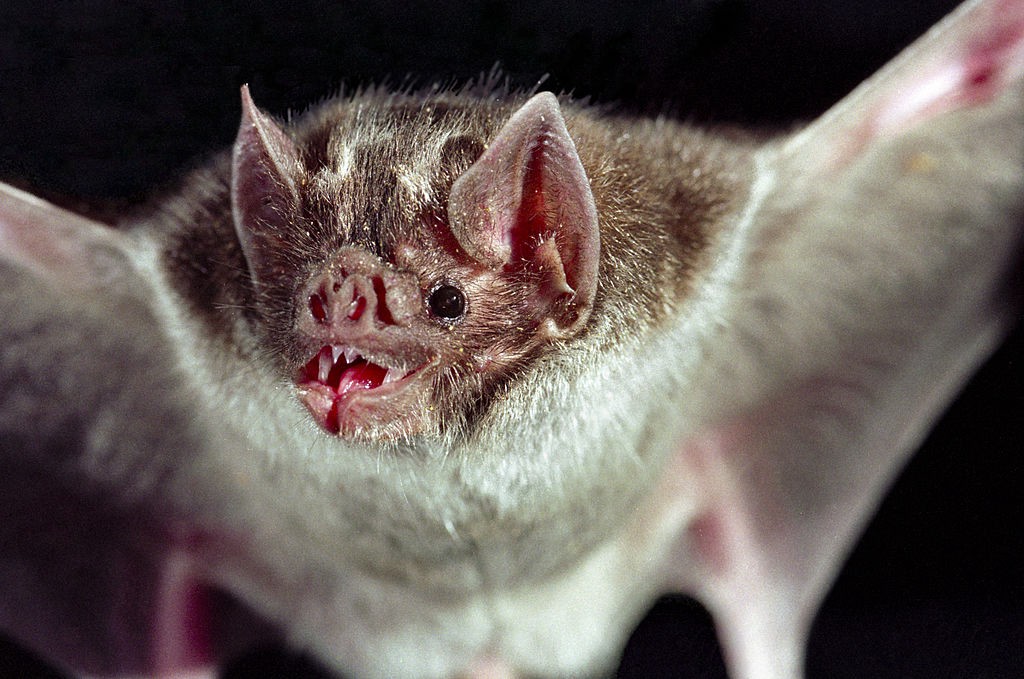How Much Blood Would A Vampire Really Need To Survive?

A mathematical look at the undead diet.
Our Movie Mythbusters series answers the age-old question, “Okay, but could that actually happen in real life?”
Lodged more deeply in our cultural consciousness than any other night-stalker, the vampire is the definitive supernatural predator whose cunning and keen senses make for the ultimate after-dark baddie. Since the release of Bram Stoker’s 1897 novel Dracula, we humans have developed an appetite for vamp lit rivaled only by those very vamps’ appetite for blood. (Note: Stoker himself admitted that many of his vampiric conventions were lifted from earlier novels The Vampyre and Carmilla.)
Sure, “The Walking Dead” and its zombies are popular, but vampires still out-earn their other other-worldly brethren at the box office and on TV. Mummies, zombies, werewolves and ghosts — none of them scratch that undead itch quite like a good, old-fashioned vampire tale. The evidence is abundant: “Twilight,” “Interview With The Vampire,” “Blade,” “The Lost Boys,” “What We Do In The Shadows,” “Thirty Days Of Night,” “True Blood,” “Buffy The Vampire Slayer,” and “The Vampire Diaries” are just a handful of the movies and shows produced in the last 20-something years for fans of the fanged. (Not to mention all the sequels they spawned.)
But one point on which these representations do not agree is this: How much blood would a vampire really need to sustain his or her life? In “Thirty Days of Night,” vampires are ravenous packs of death incarnate. “Interview With the Vampire” portrays them as nuanced immortals with a regrettable taste for blood. In “Twilight,” they’re romantic heroes who feed only on animals (they’re sensitive, ya know?).
All these conflicting representations of blood intake beg the question: How much blood does an average vampire really need to survive?
What makes a vampire?

To determine what a vampire might actually look like in real life (and therefore how much blood he or she would really need to survive), the safest bet is to find the mean stats of the vampire-as-archetype and work from there. So let’s see what we know.
Vampires…
- are fatally allergic to sunlight.
- must drink blood to survive.
- are roughly human-sized, with roughly human metabolism.
What kind of diet would sustain this adult vampire?
Now that we’re established the physiology of the nocturnal menace, we can use one of three mathematical methods to determine probable blood intake.
- We can assume that the vampire needs the same number of calories per day as a human, then work out what that looks like in liters of blood and do the gruesome arithmetic to come up with a body count.
- We can find other, real-world sanguivores like vampire bats and scale up their diet to human size.
- Or we can assign a kill rate from existing vampire lore and work backwards.
Let’s put each of these methods to the test.
Method 1: Calorie counting
Using the handy dandy Calories Intake Calculator, I designed an adult male who stands six feet tall and weighs 180 pounds. He’s moderately active (exercising 3–5 times a week) and is 30 years old. (Vampires are immortal, but that wasn’t an option on the calculator.)
The results: Our faux-vamp needs 2,937 calories a day to maintain his current weight. (I disregarded the breakdown of calories via carbs/proteins/fats, since blood is the only food group he needs.) Let’s round that up to 3,000 calories per day (CPD).
According to a thorough calculation by writer David Mark, a standard donation of 500 milliliters of blood clocks in at 425–460 calories. We’ll call that 450.
So times two, carry the one…1 liter of blood = 900 calories. To maintain a 3,000 CPD diet, our vamp —Should we name him? Let’s call him Curtis — our Curtis will need to consume just over three liters of blood per day.
Given that a 180-lb body contains about 5 liters of blood, that’s one adult kill a day. (Or a couple of spindly teenagers — Curtis ain’t picky.)
Doing the math provides us with a rather neat figure.
Annual body count: 365
Method 2: Scaling up sanguivores
Among the animal kingdom’s sanguivores, only one makes much sense to use as a vampire analog — the vampire bat. (Leeches, mosquitoes and ticks aren’t mammals, and therefore aren’t much use to us or to Curtis.)

According to National Geographic, vampire bats live in colonies of up to 100 members, and a 100-bat colony can drink the blood of 25 cows per year. A circuitous statistic, sure, but let’s unravel that. If 100 bats take down 25 cows per year and we assume that all the bats are feeding equally, then a single bat is responsible for 0.25 cows, or, in laymen’s terms, a Quarter Cow. Animal Blood Resources International pegs the volume of blood in an adult cow at 39 liters, making a Quarter Cow = about 10 liters. Ten liters spread out over 365 days works out to 27 milliliters a day.
Now comes the tricky part. If a typical vampire bat is about 8 centimeters long and weighs 40 grams (0.088 lbs), that means scaling him to Curtis’s size will take some doing. Dividing Curtis’s weight (180 lbs) by the bat’s weight (0.088 lbs) will yield the number we need to multiply 27 milliliters by in order to get the proper volume of Curtis’s diet (2,045.45).
2,045.45 x 27 = 55,227 milliliters.
Convert that, and you’ve got 55 liters per day. That’s a lot of blood. Curtis would need to kill a baseball team, its manager and its batboy each day to support a diet that demanding.
Annual body count: 4,015
Method 3: Existing lore
Much modern vampire lore (“Twilight,” “Interview With The Vampire”) seeks to remove the stigma of vampires as all-evil beings. With that movement came the introduction of vampires surviving off the blood of animals. (The Cullens and the Denalis do it in “Twilight,” while Louis alternates between animals and humans in “Interview.”) But according to this extremely scientific and very real debunking of popular vampire “myths,” animal blood alone will not provide Curtis with all the nutrients he needs. He will, eventually, have to kill a human.
Lowballing it, I’d say Curt can get by with one kill a week. Factoring in birthdays, vacations and holidays…I’d round it up to 1.33 a week.
Annual body count: 70
Conclusion: Drumroll, please…
I think we can all agree that the murder of 4,015 people a year would put Curtis at an extremely high risk for being caught. (Not to mention what happens if his victims turn vamp themselves — that sort of exponential growth would wipe his food supply out in no time.) So, that method is out.
The one-a-day rule also seems fairly generous. Detroit, for example, sees about 300 murders a year. Extrapolating that data for our purposes means Curtis would be responsible for every single one of those murders. Nah, ain’t no way.
Which brings us to the Existing Lore method of calculating how much blood Curtis needs. An annual body count of 70 means Curtis is certainly no saint. But neither is he so prolific that catching him in the act is guaranteed. Operating only at night and perhaps moving between cities, our vampire could theoretically get away with this diet.
Bon appetit, Curtis!
